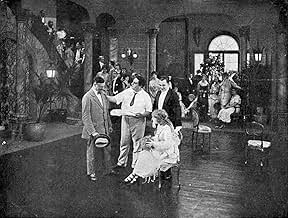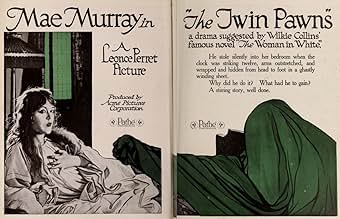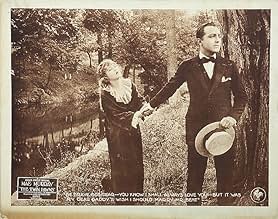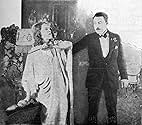Adicionar um enredo no seu idiomaSeparated since birth, twins Violet and Daisy White are unaware of each other's existence. Violet, the idol of her indulgent father Harry has everything her heart could desire while Daisy, r... Ler tudoSeparated since birth, twins Violet and Daisy White are unaware of each other's existence. Violet, the idol of her indulgent father Harry has everything her heart could desire while Daisy, reared by her indigent mother, is poorly clad and underfed. This fragile child of the slums... Ler tudoSeparated since birth, twins Violet and Daisy White are unaware of each other's existence. Violet, the idol of her indulgent father Harry has everything her heart could desire while Daisy, reared by her indigent mother, is poorly clad and underfed. This fragile child of the slums is not aware that John Bent possesses certain papers which confirm her true relation to H... Ler tudo
- Direção
- Roteiristas
- Artistas
- Direção
- Roteiristas
- Elenco e equipe completos
- Produção, bilheteria e muito mais no IMDbPro
Avaliações em destaque
The identification of a person in one case is made only through the fact that the person's corpse's finger wears a ring, and in another case - and we're talking now about a living person of sound intellect, who can talk - is made only through the statements of other people.
Three persons are standing in a row along the bed of a woman of sound intellect lying in bed. The events of the film could have taken a whole different turn if she had seen one of the three, and she must have seen him/her, as she is talking to them and apparently watching them. But no. Not seen, not recognized (?).
These are just some of the plot holes in "The Twins Pawns", which anyhow remains an interesting film, which ends - the American way - with a sound fist-fight.
He packs Daisy off to a boarding school and descends on the rich man with the papers but stating that Daisy had died. The rich man, impressed at Oland's honesty, offers him a job and takes him into the family which includes Violet (Murray) and his chief engineer who is in love with Violet.
After the father is injured in a lab explosion, Oland pressures the dying man to force Violet to marry him. The old man concedes and Oland marries Murray. But she refuses to be his wife.
Oland next drugs Violet and takes her rings just before picking up Daisy from her school. Daisy has the same heart condition her mother had, so Oland frightens her to death and places the wedding rings on her dead hand and passes her off as Violet! Next up, he convinces some doctors that the real Violet is Daisy and that she had gone insane. Murray goes nuts trying to convince the stupid doctors, who immediately commit her to an asylum. Bent inherits the family fortune and business.
From the asylum, Violet is able to sneak a letter to her engineer boyfriend who comes to her rescue. But are they too late to stop Oland? Will anyone believe Murray is really Violet the heiress? Plot is loosely based on "The Woman in White" by Wilkie Collins and offer both Murray and Oland meaty roles in a rather far-fetched plot. Productions values are excellent, and the last third of the film is really exciting and action packed. The film has existed in a Dutch archive for many years and was recently translated into English.
The war hit the French industry very hard and in the years immediately following 1914 the trickle became something of a steady stream. Louis J. Gasnier arrived in 1913 on behalf of Pathé where he was responsible for the pioneering Perils of Pauline. Maurice Tourneur arrived in 1914 as the representative of Éclair as did and Émile Chautard and his assistant Georges Archainbaud and cinematographer Lucien Andriot. Chautard took on another assistant, an American of Austrian Jewish stock called Joe Sternberg.
Lewis Selznick's World Film, based in Fort Lee, New Jersey, became a sort of showcase for the French directors who increasingly formed a distinct group that more or less took over the company for the next four or five years. Albert Capellani joined from Pathé in 1915. Perret, a relative late-comer, arrived in 1917. The French star Max Linder (who had already made films for Essanay in 1916) returned in 1921 to form his own production company (there is a short publicity film of this date, Combat de boxe, usuually misidentified and misdated, fetauring Tourneur and Linder).
By this time the French invasion was pretty much over. The US was itself feeling the effects of economic depr4ession. Selznick retook control of World Film. Gaston Méliès, after a curious episode in the South Pacific, died in Corsica in 1915. Alice Guy retired. Linder committed suicide. Gasnier stayed on to become infamous as the director of Reefer Madness. Chautard stayed on as a minor Hollywood character actor. Archainbaud became a very run-of-the-mill minor director. Capellani (a sick man), Tourneur and Perret all returned to France. Andriot had a moderately successful career in the US until his retirement in the fifties.
The French group at World Film were characterised by a notion of the "art film" that they had brought with them from home but unfortunately this was the notion of the "art film" current between 1905 and 1914 which put the emphasis on literary productions not the very different and rather more cinematic concept that would galvanise the next generation in France (Gance, L'Herbier, Dulac, Epstein, the young Duvivier, Clair and Feyder). So their US productions are often adaptations of literary classics (The Blue Bird, The Last of the Mohicans, Lorna Doone, Victory or, as here, where the inspiration is Collins' The Woman in White).
Stylistically, following the lead of Tourneur, they took the line of least resistance and adopted the US model. Critics are so fond of proclaiming the supposed advance represented by this model that they often overlook the fact that its success was due rather less to its having revolutionised "the language of cinema" - it did no such thing - and rather more to the fact that, with its simple patterns of cross-cutting to ensure continuity and back-lighting to ensure a shallow field of vision, it was extremely easy - in practice a formula for mass-producing mediocre films without having to leave the studio.
And that by and large is what the French presence in the US produced (certainly when one compares it the much more innovative work that would be produced in France itself) and set the pattern too for the next mini-invasion in the forties when Duvivier, Renoir, Clair and others would adopt the same conservative strategy with the same mediocre results. In the Great War generation only Tourneur was really able to transcend the limitations of working in the US in his best films (The Blue Bird, say, or The Wishing Ring); in the Second World War generation only Duvivier found a relatively successful formula - the portmanteau film - for his US career.
So this is an entirely worthy but rather dull piece of work by Perret, technically very efficient with some excellent effects and at times a depth of shot sadly lacking in most US films but it still lacks the style and imagination that characterised his best early French films.
Little care has been taken with the writing. With a generally bad experience of the US reception of "difficult" European films (due in fact to cultural difference rather than stupidity), Europeans tended to believe that US audiences had to have everything carefully spelt out in words of one syllable and that all films had to conclude with a big punch-up and a happy end. So, here, one knows far too much about what is going on at every stage and as a result there is no real tension, mystery or suspense.
Leonce Perret's movie has a couple of plot holes in it, but it has some fine melodramatic tropes running through it, as well as Perret's careful, symmetric compositions. Oland is appropriately smarmy. Miss Murray at 30 easily plays the teen-aged girls.
Perret had come to the United States in 1917; movie production was way down in France, what with the war. He would make movies for a variety of companies through 1921, then return to France. There he would continue to direct through his death in 1935 at the age of 55.
Você sabia?
- CuriosidadesThe print posted on YouTuber by eyefilm.nl is from an excellent tinted 35mm original, but with Dutch inter-titles; the print released on DVD in 2018 from Alpha Video Distributors is substantially the same but below par as to image quality, and does provide what seem to be original English-language inter-titles. The less said about Alpha's musical accompaniment, the better.
- ConexõesVersion of The Woman in White (1912)
Principais escolhas
Detalhes
- Data de lançamento
- País de origem
- Idiomas
- Também conhecido como
- The Curse of Greed
- Locações de filme
- Empresa de produção
- Consulte mais créditos da empresa na IMDbPro
- Tempo de duração
- 1 h 20 min(80 min)
- Cor
- Mixagem de som
- Proporção
- 1.33 : 1



















